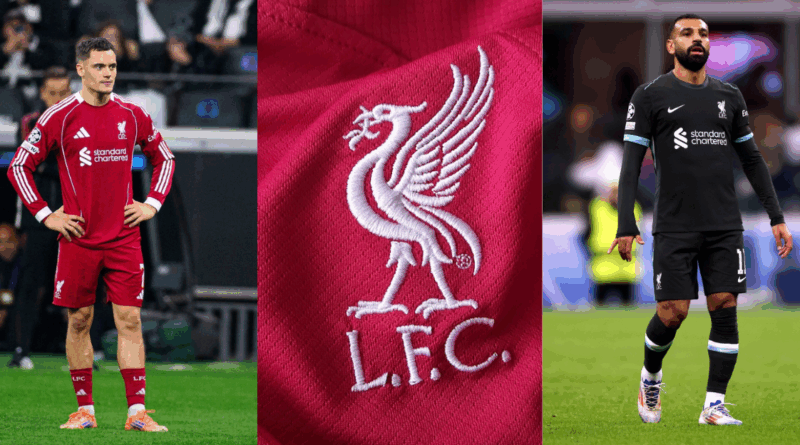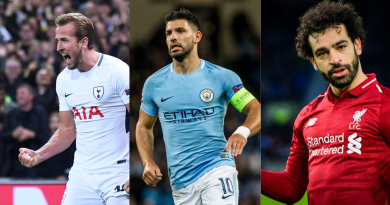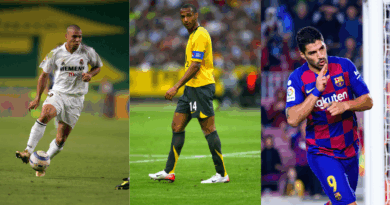Liverpool’s ´tactical identity crisis: A team caught between two eras
One of the biggest reasons behind Liverpool’s struggles this season is Mohamed Salah’s dip in form. Last season, he recorded 8 goals and 7 assists for Liverpool, but this year he has managed only 4 goals and 3 assists in his first 13 appearances for Liverpool. His Sofascore rating has also dropped — averaging 6.7 over the first three months compared to 7.7 last season, According to Sofascore.
It’s clear that Liverpool’s main man over the past eight years is finding it difficult to hit his usual standards, especially as the competition from Arsenal has become much tougher.
Another concern is Alexis Mac Allister, who doesn’t seem entirely comfortable in his current role. Last season, Liverpool’s midfield of Mac Allister, Ryan Gravenberch, and Dominik Szoboszlai looked balanced and cohesive. But that dynamic has shifted.
This summer, Liverpool signed Florian Wirtz from Bayer Leverkusen for €125 million — a natural No. 10 who thrives in attacking areas but contributes little defensively. That has pushed both Gravenberch and Mac Allister into deeper, more defensive roles that don’t necessarily play to their strengths.
Read also: Ronaldo makes history as football’s first billionaire
Summer transfers without success
Liverpool spent €482.9 million on new signings — Alexander Isak, Hugo Ekitike, Florian Wirtz, and Jeremie Frimpong — all top-level players with hefty price tags. But so far, none of them have fully found their feet at Anfield.
“It’s always a bit of a bumpy road when you make changes,” said Liverpool manager Arne Slot after the defeat to Brentford. “That is not so surprising. But four league losses in a row?”
One major issue is the loss of Trent Alexander-Arnold, who used to operate almost like a playmaker from the back, launching precise passes from deep. His replacement, Jeremie Frimpong, plays a much more advanced, wide role — stretching defenses but offering less in buildup.
The departure of Luis Díaz to Bayern Munich has also hit Liverpool hard. His creativity and directness — 20 goal contributions last season — have yet to be replaced.
Read also: Claude Makélélé joins Miss Universe 2025 jury
This shift has left a noticeable imbalance in Liverpool’s attack. While the team tries to adapt, much of the Premier League has moved in another direction entirely. Many teams have embraced a more physical, direct approach — relying on long balls, set pieces, and second balls. It’s not always pretty, but it’s proving effective.
Liverpool’s attacking play this season feels slower and less incisive compared to last year’s quick, direct style — and that contrast has made them look out of step with the rest of the league.
Injuries also rlay a big role
Injuries have further complicated Liverpool’s campaign. The current injury list from Liverpools official site includes:
- Alisson Becker
- Jeremie Frimpong
- Ryan Gravenberch
- Alexander Isak
- Curtis Jones
- Giovanni Leoni
- Amara Nallo (suspended)
These absences have reduced the team’s flexibility, forcing players into unfamiliar roles and weakening the bench. Depth — particularly attacking options off the bench — is one of the key differences between Liverpool and title rivals Arsenal, who now boast one of the strongest squads in Europe.
Read also: Ranking the Highest-Paid Premier League Veterans
As the season unfolds, Liverpool face a defining moment. The talent is clearly there — from Gakpo and Wirtz to Gravenberch and Frimpong — but the cohesion is not. Arne Slot’s challenge now is to rediscover the intensity and balance that once made Liverpool nearly unstoppable.
If the team can recover key players, adapt their style, and reignite confidence, a turnaround is still possible. But unless that happens soon, the Reds’ campaign could quickly slip from a title chase to a battle for top-four survival.
Sources: Sofascore, Transfermarkt, Liverpool FC, CNN Sport
Read also: Premier League predictions: Who’s going down, and who’s going all the way?
Read also: Premier League's sharpest shooters: top 15 players by expected goals (xG)




